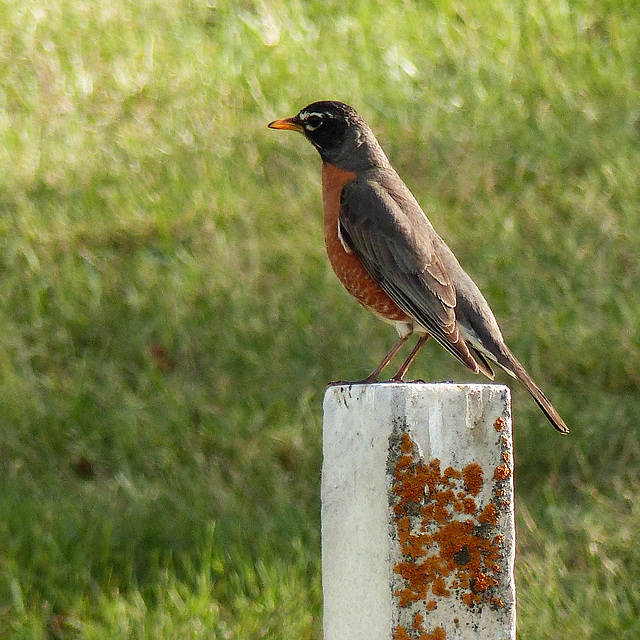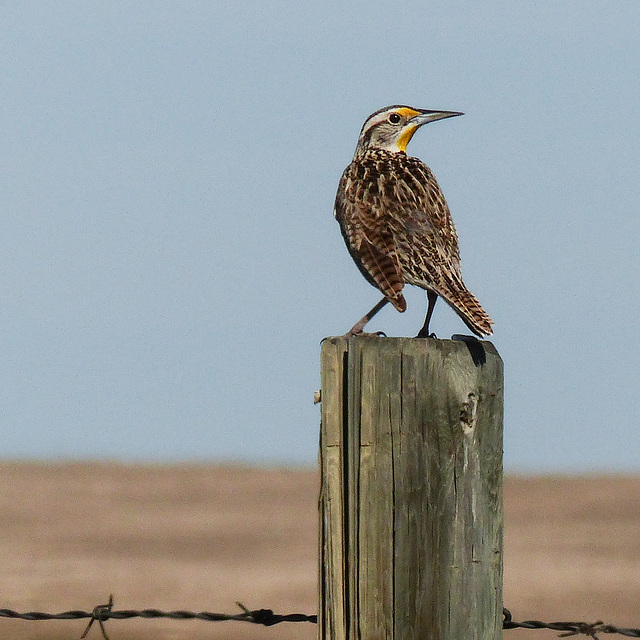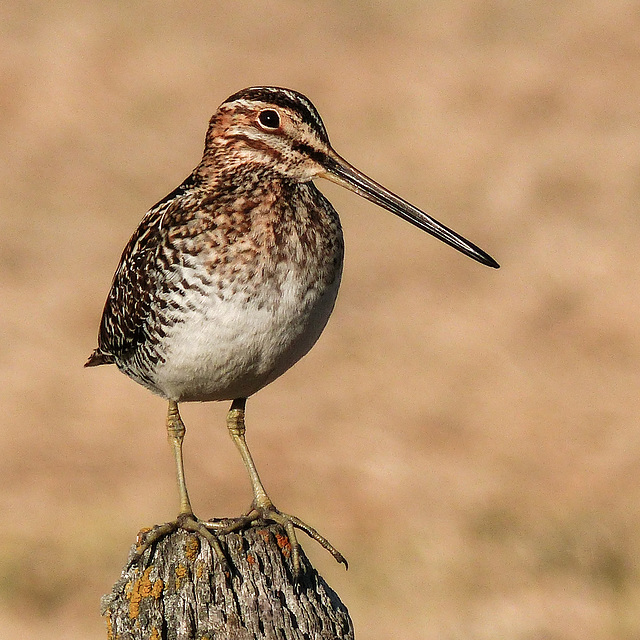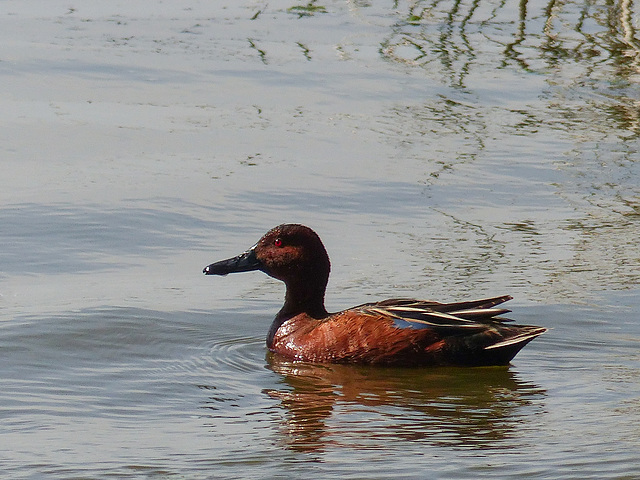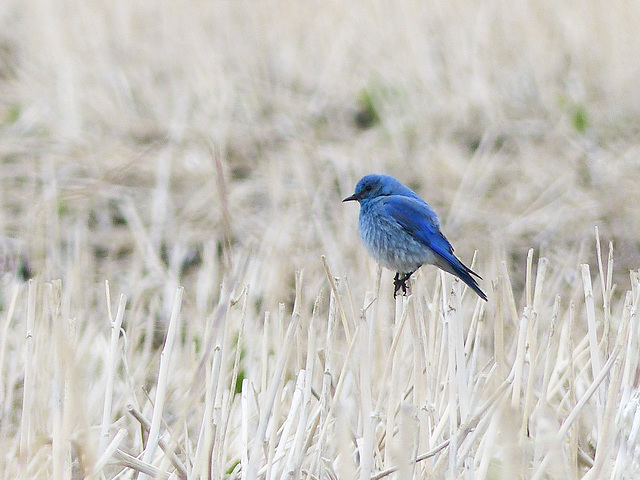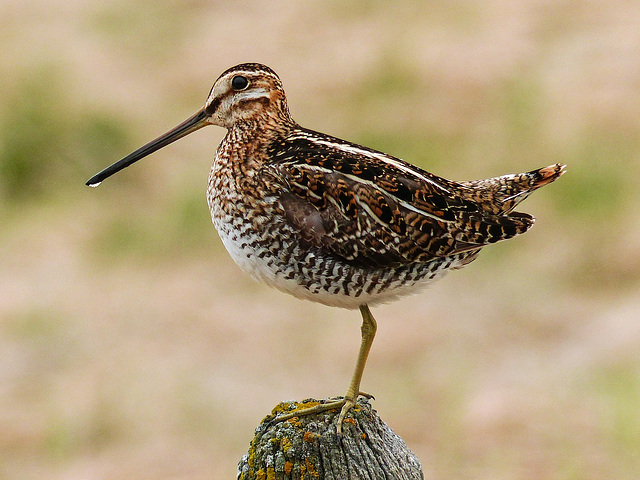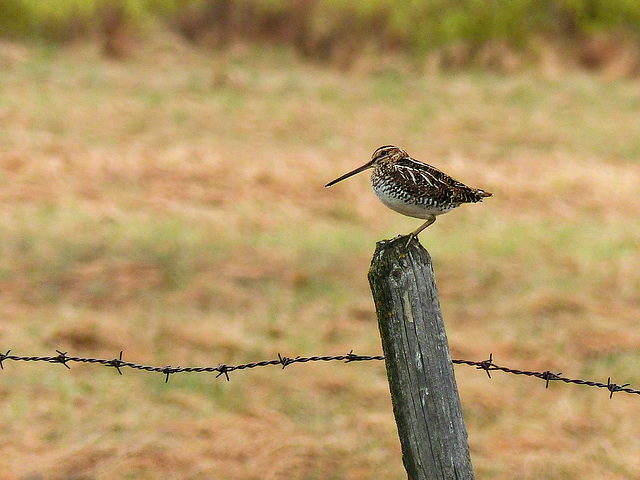
Birds of Alberta 11
18 May 2016
1 favorite
Matching colours
Update on the massive wildfire in the Fort McMurray area:
"On May 1, 2016, a wildfire began southwest of Fort McMurray, Alberta, Canada. On May 3, it swept through the community, destroying approximately 2,400 homes and buildings and forcing the largest wildfire evacuation in Albertan history. As of May 17, it continues to spread across northern Alberta, consuming forested areas and impacting Athabasca oil sands operations. It may become the costliest disaster in Canadian history.
.... While the fire had moved away from Fort McMurray, explosions and poor air quality continued to prevent residents and rebuilding crews from returning to the town. The wildfire is still burning and is expected to take months to contain and extinguish." From Wikipedia.
en.wikipedia.org/wiki/2016_Fort_McMurray_wildfire
www.theglobeandmail.com/news/alberta/the-fort-mcmurray-di...
---------------------------------------------------------------------------------
Yesterday, 18 May 2016, I went to what was most likely my last volunteer shift. I have been volunteering there for about 18 years and it has been a wonderful experience. However, as the number of clients constantly rises, even more so with the poor state of the economy, the problem of parking has become a real issue. Though we have to park on the nearby street, usually at the very far end of it, I now find that each time I go, I have to park further and further away. There is no sidewalk on which to walk and there are many huge trucks coming and going all the time. Makes for a dangerous walk. In winter, it will be even worse. I always walk in pain and yesterday was, I think, the final straw, when I had to park even further away. I have been volunteering at several places for the last 36 or so years, so I know I will miss it, but I was just not enjoying the long walk and always wondering if I was even going to be able to find a parking spot. I know I will miss good friends there, terribly.
Anyway, after my shift, I thought I had better call in at the Reader Rock Garden, in case I don't get over there for a long time. I wasn't sure about the weather and I did feel the odd raindrop, plus it was rather windy. However, the scent around the garden was wonderful - I could have stayed there for hours, just breathing it in. Plenty of flowers to enjoy. The few workers do such a great job of keeping this place looking beautiful. If you visit and you happen to see one of the staff or volunteers, do let them know how much you appreciate all their hard work and care. I know they would appreciate it.
I always drive slowly through the adjoining Union Cemetery, keeping my eyes open for one of the Jackrabbits, in particular. I was in luck yesterday with one brief sighting, and also enjoyed watching American Robins flying from gravestone to gravestone. Most of the stones are covered in lichen, especially the bright orange kind, and I liked the way this Robin matched the lichen. A distant shot and rather fuzzy, but thought I would still post it.
06 May 2016
6 favorites
3 comments
First day out in the big, wide world
Update on the massive wildfire in the Fort McMurray area:
"On May 1, 2016, a wildfire began southwest of Fort McMurray, Alberta, Canada. On May 3, it swept through the community, destroying approximately 2,400 homes and buildings and forcing the largest wildfire evacuation in Albertan history. As of May 17, it continues to spread across northern Alberta, consuming forested areas and impacting Athabasca oil sands operations. It may become the costliest disaster in Canadian history.
.... While the fire had moved away from Fort McMurray, explosions and poor air quality continued to prevent residents and rebuilding crews from returning to the town. The wildfire is still burning and is expected to take months to contain and extinguish." From Wikipedia.
en.wikipedia.org/wiki/2016_Fort_McMurray_wildfire
www.theglobeandmail.com/news/alberta/the-fort-mcmurray-di...
---------------------------------------------------------------------------------
This photo was taken on 6 May 2016, about two weeks ago. I didn't post it straight away, as I wanted to be certain that this owlet had managed to climb high up into a tree, where it would be safe.
Unfortunately, I had half a dozen errands to run before allowing myself to go out with my camera that day, so I didn't get to the park till part way through the evening, and the light was already beginning to quickly fade. This beautiful owlet had been on the ground for a while before I arrived. There were a few people there and more came and went. I didn't want to risk a large crowd turning up if I posted this photo immediately. However I later heard that it had been able to claw and flap its way up one of the trees and was safely out of reach of most predators. Meanwhile, the other fledgling had been very high up in a different tree, along with Mom. I'm glad I did call in at this location when I did, as this beautiful little owl gave us a few chances for photos when it was up on a log or down on the ground, partly hidden by the plants and bushes. I don't know how it ended up on the ground, but obviously it fell from somewhere or misjudged flying distance when it finally left the nesting tree. An interesting world for it to explore, though it wasn't very steady on its feet yet : )
Things seem to have happened so fast this spring and I missed seeing the two owlets balancing on the rim of the nesting tree, exercising their wings before fledging. Also, I have been so busy that I've only been over to see the youngsters a handful of times. Looking on the more important side, this has meant one less person intruding on their area, of course, though I have to say that these owls are remarkably tolerant of humans. If a Canada Goose, on the other hand, should get anywhere near the nest or the little ones, Mom or Dad flies in for an immediate attack.
"With its long, earlike tufts, intimidating yellow-eyed stare, and deep hooting voice, the Great Horned Owl is the quintessential owl of storybooks. This powerful predator can take down birds and mammals even larger than itself, but it also dines on daintier fare such as tiny scorpions, mice, and frogs. It’s one of the most common owls in North America, equally at home in deserts, wetlands, forests, grasslands, backyards, cities, and almost any other semi-open habitat between the Arctic and the tropics.
Great Horned Owls are nocturnal. You may see them at dusk sitting on fence posts or tree limbs at the edges of open areas, or flying across roads or fields with stiff, deep beats of their rounded wings. Their call is a deep, stuttering series of four to five hoots." From AllAboutBirds.
www.allaboutbirds.org/guide/Great_Horned_Owl/id
en.wikipedia.org/wiki/Great_horned_owl
02 May 2016
Western Meadowlark
Two and a half weeks ago, on 2 May 2016, I was incredibly fortunate to be able to witness about 30 (?) Sharp-tailed Grouse, mainly male with just a handful of females, displaying at their "lek" or communal dancing ground. On this particular day, five of us went to see this. There had been a couple of possible chances to get out there, but these had fallen through. Then out of the blue, friend Dorothy phoned me, asking if I had been able to get to the lek yet. She said that if I hadn't been, her husband Stephen would be willing to drive me there! This was such a wonderful surprise, though anyone who knows this couple already knows what amazingly kind and generous people they are. I was so happy to get this unexpected chance and the three of us had a great morning, in good weather and in good company. Two young men also went, making their own way there. Delightful guys, highly respectful of not only the Grouse, but also of us, constantly moving form their seats to allow us to get our turn, and vice versa. They could so easily have left the 'hide/blind ahead of us when the Grouse had all left, but instead they waited till we were all packed up and then made sure that we were all able to safely get over the very awkward stile at the fence line. Having been out there last year, on 13 April 2015, I knew of this problem and had bought a three-step step ladder just in case I was able to go sometime this spring. This made so much difference, thank goodness, especially as I was really tired after staying up all night in order to leave at a very unearthly hour of the morning.
So glad we had a nice, sunny day - the day I went a year ago, the weather was overcast and not good for photos. Of course, the 'problem' of clumps of tall grass was exactly the same this year, lol, keeping the birds somewhat hidden, but every once in a while, a bird would come out into the open. Most of the time, they were quite dstant, but we were very lucky that several did give us a closer view. Such magnificent birds, with their yellow 'eyebrows', purple patch below the side of the neck on the males, and glorious feather pattern. Their dance display to attract the females is so fascinating to watch.
If you have time, the following 2:30 minute YouTube video by the Alberta Conservation Association is very good for showing the action of these birds. There are several still shots first and then the video starts. Pretty amazing! The birds remind me of a child's wind-up toy : )
youtu.be/vRUVIU4UfYo
Just after we got back to our cars, another car came along the road and stopped to talk with us. It turned out that this gentleman was indirectly connected to the lek. He voiced his huge concern at how many people had been out there this spring, feeling that this was not good for the Grouse. He said that hopefully no more people would be going, so that the Grouse would be undisturbed in their mating. We agreed with him and thought that maybe people should not be allowed to visit every year, but perhaps every two or three years. I will pass on his words and great concern to our Naturalist who organizes these visits.
After we left the lek, we travelled a few nearby backroads, hoping to see a Western Meadowlark. We saw 10! It had been so funny, while we sat in the blind at the lek, a Meadowlark was somewhere nearby and sang for us for about four hours! When we at last emerged from the blind into the sunlight, there was no sign of it anywhere. We did manage to get a few shots of two or three of them.
"The buoyant, flutelike melody of the Western Meadowlark ringing out across a field can brighten anyone’s day. Meadowlarks are often more easily heard than seen, unless you spot a male singing from a fence post. This colorful member of the blackbird family flashes a vibrant yellow breast crossed by a distinctive, black, V-shaped band. Look and listen for these stout ground feeders in grasslands, meadows, pastures, and along marsh edges throughout the West and Midwest, where flocks strut and feed on seeds and insects." From AllAboutBirds.
www.allaboutbirds.org/guide/Western_Meadowlark/id
en.wikipedia.org/wiki/Western_meadowlark
Thank you so much, Stephen and Dorothy, for offering to take me - so very kind and thoughtful of you, as always! The stop for having our sandwiches was great and the muffins you brought along with you ended the morning very nicely.
If you have time, the following 2:30 minute YouTube video by the Alberta Conservation Association is very good for showing the action of these birds. There are several still shots first and then the video starts. Pretty amazing! The birds remind me of a child's wind-up toy : )
youtu.be/vRUVIU4UfYo
I came across an excellent brochure (pdf file) about Sharp-tailed Grouse on the Internet and will use some of the information from it, instead of using my own words to describe what goes on at a lek. I had seen females of this species before, on Christmas Bird Counts, but not a male and not at breeding time.
www.ab-conservation.com/downloads/educational_materials/b...
"Sharp-tailed grouse perform spring courtship displays on communal “dancing grounds” called leks. Here, males compete for breeding opportunities by displaying their "dancing” ability to females. Most activity on the lek occurs in the early morning just before sunrise and for a few hours afterwards. The males’ energetic display includes fluttering wings, rapid foot stomping and spinning in tight circles - reminiscent of wind-up toys. The most dominant males court females with low cooing sounds and by strutting around them with inflated air sacs on their neck and fanned tail feathers. It is nearly a winner-take-all form of competition, as only a few of the males are selected as mates by the females.
Leks are found in areas with dry open ground, where dancing activity keeps the vegetation well-trampled. Leks are used over several weeks beginning in late March and are often used for years, even decades. They are an important part of sharp-tailed grouse life, and the loss of suitable lek habitat can be a limiting factor for sharp-tailed grouse in Alberta.
Male sharp-tailed grouse gather on the lek in late March. In April the females arrive, sparking increased displaying by the males. Peak attendance by females on the lek occurs between mid to late April in much of Alberta. Once they have selected a male, hens breed once and then seek out a place to nest, usually in late April to early May.
Leks are an integral part of the lifecycle of prairie grouse. Active leks should never be approached, as any disturbance to the birds may disrupt breeding activities and result in the abandonment of the lek. The locations of active and historical leks are of great interest to grouse biologists.
Native North Americans called the sharp-tailed grouse “Fire Bird” because of their reliance on fires to keep their habitat open in wooded areas. Suppression of natural fire in parkland and boreal areas reduces the amount of open grassland available to sharp-tailed grouse.
Sharp-tailed grouse were an important food source for native North Americans and they continue to be a popular game bird for hunters today.
In Alberta, the sharp-tailed grouse is listed as “Sensitive.”
While exact population numbers are not known, there is a feeling that sharp-tailed grouse have decreased significantly in numbers over the past 40 years. This trend is supported by lek counts, hunter surveys, aerial counts and Breeding Bird Survey data. Declining numbers are the result of a reduction in the quality and quantity of sharp-tailed grouse habitat, particularly the loss of quality nesting and brood-rearing habitat." From www.ab-conservation.com .
www.ab-conservation.com/downloads/report_series/Use-Habit...
07 May 2016
2 favorites
2 comments
One of my favourite birds to photograph
I went for a short drive SW of the city early evening on 7 May 2016. I was hoping to see Mountain Bluebirds, but my 'usual' pair don't seem to be at their old nesting box. At least, there was no sign of them yesterday, and Tree Swallows were circling around this box and the one just a few feet away. I did find a different pair, being harassed by Tree Swallows, and was able to get several distant, quick shots.
I was also hoping to see a Wilson's Snipe at the usual place and I was lucky to find this one standing on a fence post. Usually, these birds will stay for a while, but this one let me get a couple of photos and off it flew. It was SO good to see one again - they are one of my favourite birds to photograph. Other species seen were a Red-winged Blackbird, Yellow-headed Blackbird, a Coot, various distant ducks and an extremely distant pair of Red-necked Grebes.
"These plump, long-billed birds are among the most widespread shorebirds in North America. They can be tough to see thanks to their cryptic brown and buff coloration and secretive nature. But in summer they often stand on fence posts or take to the sky with a fast, zigzagging flight and an unusual “winnowing” sound made with the tail." From AllAboutBirds.
www.allaboutbirds.org/guide/wilsons_snipe/id
"Wilson's Snipe (Gallinago delicata) is a small, stocky shorebird. This species was considered to be a subspecies of the Common Snipe (G. gallinago) until 2003 when it was given its own species status. Wilson's Snipe differs from the latter species in having a narrower white trailing edge to the wings, and eight pairs of tail feathers instead of the typical seven of the Common Snipe. Its common name commemorates the American ornithologist Alexander Wilson." From Wikipedia.
en.wikipedia.org/wiki/Wilson's_snipe
According to Fisher and Acorn's book, "Birds of Alberta", "the common Snipe is both secretive and well camouflaged, so few people notice it until it flushes suddenly from a nearby grassy tussock. As soon as the Snipe takes to the air, it performs a series of quick zigzags - an evasive maneuver designed to confuse predators. Because of this habit, Snipes were among the most difficult birds to shoot (in the days when shorebirds were hunted for sport), and skilled sportsmen were known as "snipers" - a term later adopted by the military."
youtu.be/Z16CUdX2g5Q
21 May 2016
A little eye-catcher
All three photos posted this morning were taken yesterday, 21 May 2016. Will have to add the rest of my descriptions, etc. later today.
This photo was taken on a cold, rainy day, on 21 May 2016, after I had spent the morning with a group of friends at Barb Castell's acreage. It had been arranged for us to visit to see birds such as Evening Grosbeaks, Rose-breasted Grosbeaks, Baltimore Orioles, and three species of Hummingbird. However, I guess they just didn't like the weather any more than we did and were keeping hidden and sheltered somewhere. We did still see a Tree Swallow, Mountain Bluebird, Sapsucker, etc., but not the less commonly seen birds. It was an early start to the day, too, as I had to leave the house at 7:00 am.
After spending time at Barb's place, we stopped at several sloughs to check on birds, and then we went our various ways. There were a few places I wanted to check out, plus a brief stop at Brown-Lowery Provincial Park (the best place because it has an outhouse!). When I was there, I thought I might as well at least take a few steps down the rough path, where I was happy to find a group of tiny mushrooms. Also bumped into a fellow birder, who spotted a Cape May Warbler on top of the tallest coniferous tree. I had never seen one before and must remember to see if I can brighten the very distant, black silhouette in a photo I took.
From Brown-Lowery, I called in again at a favourite slough to look for the Wilson's Snipes that I love to photograph and found a couple of them. Also found a pair of Mountain Bluebirds that were so cooperative. They were busy collecting strands of dried grasses to line their nesting box. Quite amusing to watch the male try to handle one piece that was too long. The male in this photo was taken at a different location, alongside a field of light-coloured stubble. The splash of brilliant blue caught my eye as I was driving past.
Normally, when the weather is very overcast and raining, I stay home : ) I was amazed that some of my photos came out reasonably well, at least when seen at this size, despite the low light. The day after this, on 22 May 2016, it was the same kind of weather. The day was spent with my daughter (as an early birthday for me), but we were mainly in the car and not outside in the rain. Some photos came out OK and others were blurry - just thankful for the ones that came out well enough. We had a lovely day together, starting with a late breakfast at the Saskatoon Farm and then driving some of the back roads SW of Calgary. Thanks so much, Rachel!
In Bluebirds, the blue colour is produced by the structure of the feather - there is no blue pigment. "Tiny air pockets in the barbs of feathers can scatter incoming light, resulting in a specific, non-iridescent color. Blue colors in feathers are almost always produced in this manner. Examples include the blue feathers of Bluebirds, Indigo Buntings, Blue Jay's and Steller's Jays."
www.allaboutbirds.org/guide/Mountain_Bluebird/id
www.jstor.org/discover/pgs/index?id=10.2307/4077277&i...
en.wikipedia.org/wiki/Mountain_Bluebird
21 May 2016
1 favorite
1 comment
This Snipe 'doesn't have a leg to stand on'
All three photos posted this morning were taken yesterday, 21 May 2016. Will have to add the rest of my descriptions, etc. later today.
In Calgary, the temperature is 2C (windchill -2C) this morning, expected to go up to 4C this afternoon. It has been pouring with rain since yesterday evening. (Airdrie is basically joined on to north Calgary.) The weather forecast for today, from the Weather Network:
"There could be a lot of unhappy campers this May long weekend as a snowfall warning covering parts of southwestern Alberta was issued Saturday.
Airdrie, Banff, Canmore, Cochrane, Nordegg, Olds, Rocky Mountain House and Sundre are covered by the warning.
Environment Canada says each of those communities can expect between 10 and 20 centimetres of snow between Saturday and Sunday afternoon.
"Heavy wet snow may cause tree branches to break," Environment Canada said in the warning.
"Rapidly accumulating snow could make travel difficult over some locations. Visibility may be suddenly reduced at times in heavy snow."
----------------------------------------------------------------------------------------------
This photo was taken on a cold, rainy day, on 21 May 2016, after I had spent the morning with a group of friends at Barb Castell's acreage. It had been arranged for us to visit to see birds such as Evening Grosbeaks, Rose-breasted Grosbeaks, Baltimore Orioles, and three species of Hummingbird. However, I guess they just didn't like the weather any more than we did and were keeping hidden and sheltered somewhere. We did still see a Tree Swallow, Mountain Bluebird, Sapsucker, etc., but not the less commonly seen birds. It was an early start to the day, too, as I had to leave the house at 7:00 am.
After spending time at Barb's place, we stopped at several sloughs to check on birds, and then we went our various ways. There were a few places I wanted to check out, plus a brief stop at Brown-Lowery Provincial Park (the best place because it has an outhouse!). When I was there, I thought I might as well at least take a few steps down the rough path, where I was happy to find a group of tiny mushrooms. Also bumped into a fellow birder, who spotted a Cape May Warbler on top of the tallest coniferous tree. I had never seen one before and must remember to see if I can brighten the very distant, black silhouette in a photo I took.
From Brown-Lowery, I called in again at a favourite slough to look for the Wilson's Snipes that I love to photograph and found a couple of them. Also found a pair of Mountain Bluebirds that were so cooperative. They were busy collecting strands of dried grasses to line their nesting box. Quite amusing to watch the male try to handle one piece that was too long.
Normally, when the weather is very overcast and raining, I stay home : ) I was amazed that some of my photos came out reasonably well, at least when seen at this size, despite the low light. The day after this, on 22 May 2016, it was the same kind of weather. The day was spent with my daughter (as an early birthday for me), but we were mainly in the car and not outside in the rain. Some photos came out OK and others were blurry - just thankful for the ones that came out well enough. We had a lovely day together, starting with a late breakfast at the Saskatoon Farm and then driving some of the back roads SW of Calgary. Thanks so much, Rachel!
"These plump, long-billed birds are among the most widespread shorebirds in North America. They can be tough to see thanks to their cryptic brown and buff coloration and secretive nature. But in summer they often stand on fence posts or take to the sky with a fast, zigzagging flight and an unusual “winnowing” sound made with the tail." From AllAboutBirds.
www.allaboutbirds.org/guide/wilsons_snipe/id
"Wilson's Snipe (Gallinago delicata) is a small, stocky shorebird. This species was considered to be a subspecies of the Common Snipe (G. gallinago) until 2003 when it was given its own species status. Wilson's Snipe differs from the latter species in having a narrower white trailing edge to the wings, and eight pairs of tail feathers instead of the typical seven of the Common Snipe. Its common name commemorates the American ornithologist Alexander Wilson." From Wikipedia.
en.wikipedia.org/wiki/Wilson's_snipe
According to Fisher and Acorn's book, "Birds of Alberta", "the common Snipe is both secretive and well camouflaged, so few people notice it until it flushes suddenly from a nearby grassy tussock. As soon as the Snipe takes to the air, it performs a series of quick zigzags - an evasive maneuver designed to confuse predators. Because of this habit, Snipes were among the most difficult birds to shoot (in the days when shorebirds were hunted for sport), and skilled sportsmen were known as "snipers" - a term later adopted by the military."
youtu.be/Z16CUdX2g5Q
22 May 2016
1 favorite
One of a pair
I have just watched this short (maybe 13 minutes?) video about a young girl who is removed from her home and placed in foster care. A friend had added it to her Facebook page and it is so beautifully acted by the young actress, and powerful. Maybe not to everyone's taste but, in my opinion, important to watch.
www.littlethings.com/removed-foster-care?utm_source=fbsp&...
---------------------------------------------------------------------------------
All three photos posted this morning were taken yesterday, 22 May 2016, when my daughter and I spent a great day together, as a slightly early treat for my birthday : ) Always my favourite way to spend a day!
We weren't quite sure what we would be doing, as it depended on how my daughter was feeling - so much pain, while waiting for surgery. We did know for sure that we were going straight to the Saskatoon Farm for a delicious meal, though. Not a day for walking outside, as it poured with rain the whole day. In fact, it has barely stopped at all the last couple of days, with the added surprise of a few minutes of falling snow early yesterday morning. If we could only send at least some of our rain up north to help with everyone fighting the devastating wildfire that continues to spread! That whole area has been getting some rain apparently, but not enough to put an end to the destructive path. The whole province has been a tinder box, waiting to go up in flames, so we are very grateful for the rain that's falling. Just a shame that it is on our long weekend for Victoria Day. I haven't checked yet, but especially the mountain area was forecast to have a lot of snow, so I woud imagine a lot of campers will have returned to the city already. The temperature yesterday morning was 2C (windchill -2C) and it remained cold all day, just like the day before, when I was out with my camera all day.
After the Saskatoon Farm, we went westwards into Okotoks, so that we could visit the little rustic antique place, All through the House. From there, we drove various back roads, looking for any birds that might not be hiding from the cold and rain. I was so happy that we saw a couple of Snipe standing on fence posts, as they make such beautiful photos. We even saw several hawks - more than I usually see when I go for a drive. The one in my photo was one of a pair of Swainson's Hawks. Its mate was in a nearby tree. Very often, photos I take from inside the car tend to not come out properly and I get too many blurry shots. Thankfully, some did come out OK. In fact, I have been amazed at how some of my photos came out the last two days, despite the awful weather. Normally, I would have stayed at home on such wet, dreary days, as I get mostly blurry, grainy shots in bad weather with low light. Not sure how I ended up with lots of sharp images, but maybe I need to get out more, even when the weather is not encouraging at all.
"A classic species of the open country of the Great Plains and the West, Swainson’s Hawks soar on narrow wings or perch on fence posts and irrigation spouts. These elegant gray, white, and brown hawks hunt rodents in flight, wings held in a shallow V, or even run after insects on the ground. In fall, they take off for Argentine wintering grounds—one of the longest migrations of any American raptor—forming flocks of hundreds or thousands as they travel." From AllAboutBirds.
www.allaboutbirds.org/guide/Swainsons_Hawk/id
Thanks so much, Rachel, for a much-enjoyed day and thank you for the (as always) carefuly chosen gifts and cards. Most of all, thank you for spending the day with me!
21 May 2016
Wilson's Snipe, seen from afar
"These plump, long-billed birds are among the most widespread shorebirds in North America. They can be tough to see thanks to their cryptic brown and buff coloration and secretive nature. But in summer they often stand on fence posts or take to the sky with a fast, zigzagging flight and an unusual “winnowing” sound made with the tail." From AllAboutBirds.
www.allaboutbirds.org/guide/wilsons_snipe/id
"Wilson's Snipe (Gallinago delicata) is a small, stocky shorebird. This species was considered to be a subspecies of the Common Snipe (G. gallinago) until 2003 when it was given its own species status. Wilson's Snipe differs from the latter species in having a narrower white trailing edge to the wings, and eight pairs of tail feathers instead of the typical seven of the Common Snipe. Its common name commemorates the American ornithologist Alexander Wilson." From Wikipedia.
en.wikipedia.org/wiki/Wilson's_snipe
According to Fisher and Acorn's book, "Birds of Alberta", "the common Snipe is both secretive and well camouflaged, so few people notice it until it flushes suddenly from a nearby grassy tussock. As soon as the Snipe takes to the air, it performs a series of quick zigzags - an evasive maneuver designed to confuse predators. Because of this habit, Snipes were among the most difficult birds to shoot (in the days when shorebirds were hunted for sport), and skilled sportsmen were known as "snipers" - a term later adopted by the military."
youtu.be/Z16CUdX2g5Q
This photo was taken on a cold, rainy day, on 21 May 2016, after I had spent the morning with a group of friends at Barb Castell's acreage. It had been arranged for us to visit to see birds such as Evening Grosbeaks, Rose-breasted Grosbeaks, Baltimore Orioles, and three species of Hummingbird. However, I guess they just didn't like the weather any more than we did and were keeping hidden and sheltered somewhere. We did still see a Tree Swallow, Mountain Bluebird, Sapsucker, etc., but not the less commonly seen birds. It was an early start to the day, too, as I had to leave the house at 7:00 am.
After spending time at Barb's place, we stopped at several sloughs to check on birds, and then we went our various ways. There were a few places I wanted to check out, plus a brief stop at Brown-Lowery Provincial Park (the best place because it has an outhouse!). When I was there, I thought I might as well at least take a few steps down the rough path, where I was happy to find a group of tiny mushrooms. Also bumped into a fellow birder, who spotted a Cape May Warbler on top of the tallest coniferous tree. I had never seen one before and must remember to see if I can brighten the very distant, black silhouette in a photo I took.
From Brown-Lowery, I called in again at a favourite slough to look for the Wilson's Snipes that I love to photograph and found a couple of them. Also found a pair of Mountain Bluebirds that were so cooperative. They were busy collecting strands of dried grasses to line their nesting box. Quite amusing to watch the male try to handle one piece that was too long.
Normally, when the weather is very overcast and raining, I stay home : ) I was amazed that some of my photos came out reasonably well, at least when seen at this size, despite the low light. The day after this, on 22 May 2016, it was the same kind of weather. The day was spent with my daughter (as an early birthday for me), but we were mainly in the car and not outside in the rain. Some photos came out OK and others were blurry - just thankful for the ones that came out well enough. We had a lovely day together, starting with a late breakfast at the Saskatoon Farm and then driving some of the back roads SW of Calgary. Thanks so much, Rachel!
Jump to top
RSS feed- Latest items - Subscribe to the latest items added to this album
- ipernity © 2007-2024
- Help & Contact
|
Club news
|
About ipernity
|
History |
ipernity Club & Prices |
Guide of good conduct
Donate | Group guidelines | Privacy policy | Terms of use | Statutes | In memoria -
Facebook
Twitter

